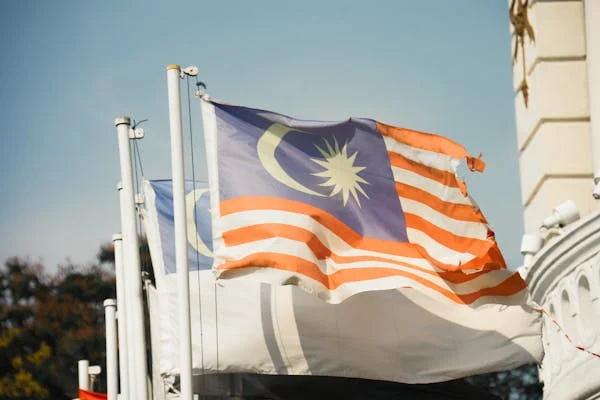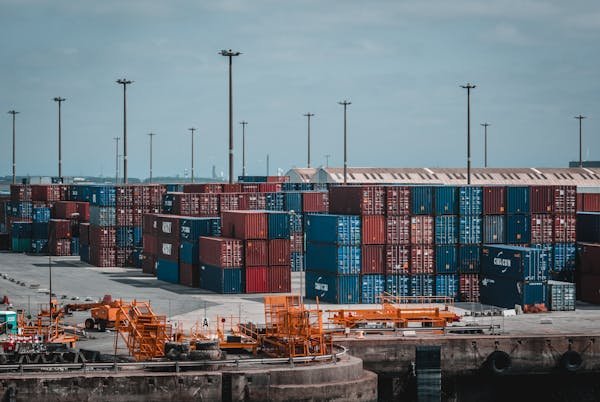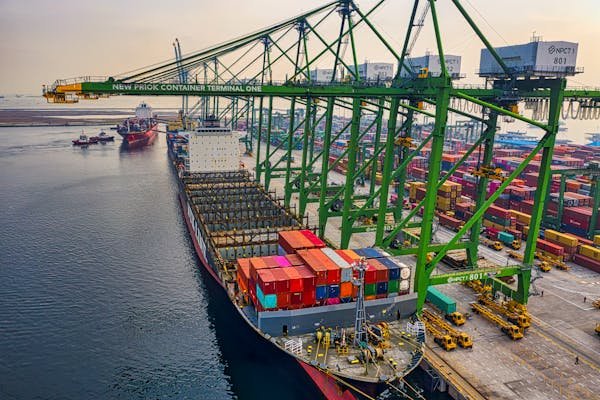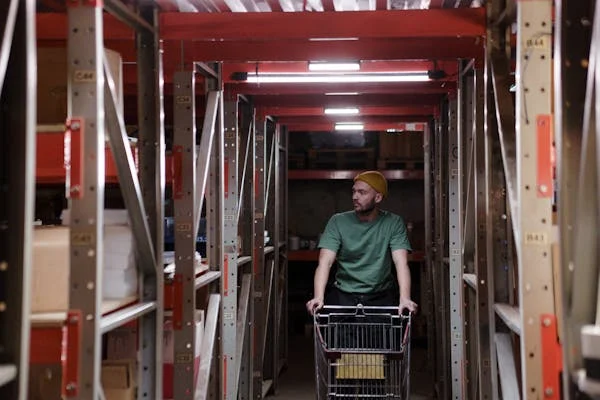Global supply chains are shifting fast. Companies want more control, lower risk, and faster delivery. That means moving production away from one country and into others that offer better deals, smoother trade, and more stability. It’s not just about cost anymore—it’s about resilience. Some countries have jumped ahead in this race. They’re attracting factories, tech, jobs, and money like never before.
1. Vietnam’s exports to the U.S. rose by over 30% between 2018 and 2023 due to China+1 strategies
Why It Happened
Vietnam has emerged as a favorite for companies that want to lower their exposure to China. It’s close to China, so supply lines stay short. Labor is cheaper, and trade agreements like the CPTPP and EVFTA give it an edge.
What Vietnam Did Right
- Made it easy for foreign companies to set up
- Signed smart trade deals with both East and West
- Invested heavily in ports, roads, and energy
How This Shift Looks on the Ground
You can walk through an industrial zone outside Hanoi and find factories making shoes, phones, furniture, and more. Many of these were built in the last 3–5 years. Some are just extensions of Chinese firms. Others are global names like Samsung and Nike shifting to diversify their base.
Tactical Takeaway
If you’re sourcing products, Vietnam should be on your radar. Learn the customs rules and local taxes—Vietnam’s bureaucracy can slow things down if you don’t plan ahead. For investors, industrial parks and logistics firms are goldmines. The smart move is to look at companies helping new factories get set up—real estate, hiring firms, or warehouse tech.
2. India’s electronics exports grew by 162% between FY2019 and FY2023
The Big Shift
India’s massive market is no secret. But now, it’s becoming a manufacturing force too. This is thanks to government programs like the Production-Linked Incentive (PLI) scheme, which rewards manufacturers for exporting more.
What India Offers
- A huge, young labor force
- Strong engineering base
- Growing digital infrastructure
- Major policy support for high-value manufacturing
The Apple Factor
Apple’s decision to assemble iPhones in India shook things up. Suppliers followed. This wasn’t just symbolic—it proved India could build high-quality electronics at scale.
Tactical Takeaway
India is not plug-and-play like Vietnam. It’s more complex, but with more upside. If you’re entering this space, focus on Tier 1 and Tier 2 cities where land and labor are still affordable. For tech hardware businesses, look into local partnerships to ease regulation.
3. Mexico surpassed China in 2023 to become the largest U.S. trading partner, with bilateral trade exceeding $860 billion
Why This Is Huge
Proximity wins. Mexico’s location next to the U.S. gives it a natural edge. After pandemic delays and rising tariffs, U.S. firms rushed to bring manufacturing closer to home.
What’s Driving the Growth
- USMCA trade deal replaces NAFTA with better rules
- Lower logistics costs
- Strong automotive and electronics clusters
- Skilled workforce with cultural alignment
The Numbers Behind It
In 2023, Mexico handled more U.S. imports than China. That’s a seismic shift in global trade. For decades, China dominated that space.
Tactical Takeaway
Think nearshoring. If you’re a U.S. company, it’s time to revisit your supply chain map. Mexican suppliers can cut lead times and inventory costs. This is also a good time for B2B SaaS players that serve logistics and customs processing—these workflows are being overhauled across the region.
4. Indonesia attracted $45 billion in FDI in 2023, with a large chunk from supply chain relocations
What’s Fueling This Rise
Indonesia is rich in raw materials—especially nickel, which powers batteries. That alone makes it attractive. But the government went a step further by banning exports of raw ore. That pushed companies to build factories inside Indonesia to process minerals.
What’s Happening Now
- Tesla and LG are investing in battery production
- Chinese and South Korean firms are pouring billions into smelters
- The country’s new capital city project is attracting infrastructure money
The Real Value
Indonesia isn’t just exporting materials now—it’s becoming a hub for value-added production. That’s a big win for long-term economic growth.
Tactical Takeaway
Battery, EV, and green energy sectors should watch this space closely. Local partnerships are key, and government support can unlock fast approvals. But do your due diligence—permits and land rights can be tricky.
5. Bangladesh’s apparel exports reached $45 billion in 2023, up from $28 billion in 2015
The Apparel Boom
Bangladesh is now the world’s second-largest garment exporter after China. It didn’t happen overnight. Over the last decade, it’s built a massive, cost-efficient apparel base.
What Makes Bangladesh Competitive
- Low labor costs
- High production capacity
- Vertical integration for faster output
- Trusted by global brands like H&M and Zara
Why Supply Chains Love It
As China’s labor costs rise, brands need alternatives. Bangladesh offers scale and speed for basic to mid-range fashion items.
Tactical Takeaway
If you’re in the apparel industry, diversify sourcing through Bangladesh. Work with factories that are certified for ethical labor. Also, logistics players should look into last-mile delivery hubs for faster turnaround.
6. Poland’s share in EU manufacturing imports increased by 3.7 percentage points from 2020 to 2024
Why Poland Is Winning
Poland is quietly becoming a backbone for European manufacturing. It has strong logistics links to Germany, affordable skilled labor, and a business-friendly environment. This has made it a favorite destination for companies trying to shift production within the EU—especially out of Western Europe.
What Poland Offers
- EU membership with stable regulations
- Strong infrastructure and rail links
- Access to both Western and Eastern European markets
- Rapid growth in tech-enabled manufacturing
What’s Being Made
Everything from household appliances to auto parts to electronics is moving to Poland. Many German companies are moving factories east to save on labor and overhead while staying close.
Tactical Takeaway
If you’re targeting the EU market, consider sourcing or manufacturing in Poland. Real estate and logistics services are in high demand here. Companies offering automation, warehousing, or workforce training can tap into massive opportunity.
7. Malaysia’s semiconductor exports rose by over 40% from 2020 to 2023
The Silicon Opportunity
Malaysia has long been a quiet player in semiconductors. But with the chip shortage and a global race to diversify away from China and Taiwan, it’s moved into the spotlight. Global giants are investing here again—Intel alone pledged over $7 billion recently.
Malaysia’s Key Strengths
- Decades of semiconductor experience
- Strong IP protection
- Favorable tax policies for tech investment
- Strategic location in Southeast Asia
What’s Being Built
Back-end packaging, testing, and assembly are Malaysia’s sweet spots. It’s not trying to compete with Taiwan’s advanced foundries but is instead carving out a niche that’s essential to the global chip supply chain.
Tactical Takeaway
This is a gold rush moment for chip supply chains. Look at local suppliers and service providers connected to the semiconductor ecosystem. Logistics, cleanroom equipment, and precision tooling firms can see major growth here.
8. India received $20 billion in smartphone assembly-related FDI since 2018
The Smartphone Shift
This surge didn’t happen by accident. India rolled out big subsidies and tax breaks to attract smartphone manufacturers—and it’s working. Apple, Samsung, and their contract manufacturers are all expanding operations.
What It Means
India isn’t just assembling low-end phones. Premium models like the iPhone 14 are now being made in India too. That’s a signal that the quality bar has been crossed.
The Broader Ripple
With phone assembly comes the entire ecosystem—camera modules, displays, batteries, PCBs. This is now triggering growth in dozens of adjacent sectors.
Tactical Takeaway
The time to enter India’s mobile hardware supply chain is now. Component makers, tooling suppliers, and local software service providers are all seeing strong tailwinds. Consider targeting states like Tamil Nadu and Uttar Pradesh where most plants are being set up.
9. Thailand saw a 70% increase in EV supply chain-related investment in 2023
The EV Push
Thailand is positioning itself as the Detroit of Asia when it comes to electric vehicles. The government has rolled out aggressive incentives for both EV manufacturing and battery production.
What’s Driving This Surge
- Strong automotive base already in place
- Generous EV tax breaks for both buyers and makers
- Regional trade ties with Japan, China, and ASEAN nations
Key Players Moving In
Chinese EV makers like BYD and Great Wall Motors are setting up factories. So are battery players and parts suppliers. Thailand is becoming the go-to place for regional EV production.
Tactical Takeaway
If you’re in the EV ecosystem—whether it’s parts, logistics, charging infra, or clean energy—Thailand is a strategic foothold. Keep an eye on government policy changes, as incentives can move fast.
10. Philippines’ electronics exports grew by 25% in 2023 due to semiconductor demand shifts
A Quiet Rise
The Philippines doesn’t often make headlines, but it’s gaining traction in electronics manufacturing. Its highly educated, English-speaking workforce is a big plus for global firms.
What’s Working
- Competitive labor cost for mid-skilled jobs
- Strong electronics and BPO ecosystem
- U.S. and Japan-friendly political climate
- Growing investments in clean energy to power factories
The Semiconductor Angle
The country is focusing on testing and assembly rather than chip design. This is a space many Western firms are eager to diversify due to geopolitical risks elsewhere.

Tactical Takeaway
If you’re in semiconductor logistics, industrial automation, or export financing, there’s room to grow here. Build local partnerships to navigate the customs and tax environment. Training services for mid-level engineers and technicians are also in demand.
11. Czech Republic’s automotive exports rose by 12% annually since 2021
The European Motor
Czechia is home to some of Europe’s biggest car manufacturers. Brands like Škoda, part of the Volkswagen group, have kept the country at the center of regional supply chains. As OEMs shift from combustion to electric, Czechia is evolving with them.
Why This Matters Now
- Central EU location gives logistics advantages
- Skilled workforce and strong engineering base
- Investments in battery and EV part production growing fast
What’s Changing
The realignment of automotive supply chains toward electrification has breathed new life into Czech factories. Suppliers are also moving here from pricier Western EU countries.
Tactical Takeaway
This is a solid bet for B2B businesses serving the European auto sector—especially in automation, robotics, smart warehousing, and clean manufacturing. Look for public-private partnerships offering co-investment.
12. Brazil attracted $10 billion in 2023 for battery production and rare earth processing
The South American Power Move
Brazil is taking bold steps to become a player in the clean energy supply chain. With rich deposits of lithium, nickel, and rare earth elements, the country is now investing in processing and manufacturing—rather than just exporting raw materials.
Why It Matters
- Brazil holds over 8% of global lithium reserves
- Renewable energy already powers over 80% of its grid
- Strategic location for trade with both North and South America
The Investment Shift
Major players from China, Europe, and the U.S. are pouring funds into Brazil to build processing plants and battery factories. Brazil isn’t just riding the green wave—it’s helping drive it.
Tactical Takeaway
Companies working in cleantech, mining equipment, and industrial automation have a big opening here. Focus on value-added services like battery recycling, smart logistics, and ESG compliance support.
13. Taiwan invested $5.5 billion in Vietnamese manufacturing from 2019–2023
The Friendshoring Play
Taiwanese companies, especially in electronics and textiles, are quietly shifting major parts of their production to Vietnam. This is not just about cheaper labor—it’s also a strategic move to hedge against rising tensions in the Taiwan Strait.
What’s Behind the Shift
- Vietnam’s growing reputation for manufacturing stability
- A long history of Taiwan-Vietnam business ties
- Tax incentives and industrial zones tailored for foreign firms
What’s Being Built
Think contract manufacturing, PCB assembly, and mid-tier component production. A lot of it is under the radar—but these facilities are serving major global brands.
Tactical Takeaway
If you work in logistics, real estate, or supply chain software, targeting this Taiwan-to-Vietnam corridor is smart. Many companies need help setting up or expanding their Vietnam operations quickly and efficiently.
14. Mexico’s share of U.S. auto imports jumped from 22% to 33% between 2018 and 2023
Reshoring in Real Time
Auto makers are moving more and more of their supply base to Mexico to reduce exposure to Asia. From full vehicle assembly to critical parts like wiring harnesses, the trend is accelerating.
Why Mexico Wins
- Shorter shipping time to U.S. plants
- Competitive labor costs
- Strong trade protections under USMCA
- Long history of OEM and Tier 1 suppliers operating in the region
The Impact on Supply Chains
Entire sub-industries are growing around new auto plants in northern Mexico. We’re seeing boom towns emerge in places like Monterrey and Guanajuato as new suppliers rush in.
Tactical Takeaway
If you’re in the U.S. auto supply chain, evaluate moving some operations closer. Also consider supporting services—customs brokers, bonded warehousing, and HR tech for cross-border hiring are hot sectors right now.
15. India’s Apple iPhone exports reached $12 billion in FY2024, up from near-zero in 2018
The iPhone Effect
India didn’t just land a big brand—it landed an ecosystem. Apple’s massive ramp-up has created jobs, built new supply chains, and helped India prove it can produce at premium quality.
What’s Happening
- Foxconn, Pegatron, and Wistron expanded or built new facilities
- Local suppliers started manufacturing key iPhone parts
- Government streamlined approvals and fast-tracked infrastructure
What This Means for India
India is now firmly on the map for high-end electronics assembly. This success story has sparked interest from other global tech giants looking to diversify manufacturing away from China.

Tactical Takeaway
Think beyond Apple. The halo effect is real—dozens of upstream and downstream firms are growing fast. Service providers that focus on compliance, export processing, or hiring are especially in demand.
16. Vietnam accounted for 11% of U.S. furniture imports in 2023, up from 5% in 2015
The Furniture Surge
As tariffs hit Chinese-made furniture, many U.S. brands turned to Vietnam. The country had the raw materials, the carpentry skills, and a track record for large-scale production. The result? A doubling of market share in less than a decade.
Why Vietnam?
- Access to timber and low-cost labor
- A mature base of exporters with years of experience
- Faster shipping than most other Asian countries
The New Norm
It’s not just about low-end chairs and tables. Vietnam is producing mid-to-high-end lines that meet demanding design and quality standards.
Tactical Takeaway
Furniture brands should keep building sourcing capacity in Vietnam. But also consider second-layer suppliers—upholstery, foam, and finishing materials now need stronger local sourcing networks to keep up with demand.
17. Indonesia increased nickel exports by 160% from 2020 to 2023
The Nickel Boom
Indonesia is sitting on the world’s largest nickel reserves. With EV battery demand exploding, this resource is now a major economic lever. But instead of just exporting it raw, the country is forcing companies to process it locally.
What Changed
- The government banned raw ore exports in 2020
- Massive FDI flowed into smelting and refining
- Global battery players started building joint ventures
The Big Picture
Indonesia is positioning itself not just as a nickel supplier, but as a core player in the battery value chain.
Tactical Takeaway
There’s real opportunity in battery materials processing. Look at downstream services like environmental engineering, logistics, and industrial maintenance for these plants. Also, mining compliance and sustainability services are needed more than ever.
18. Thailand became the 4th largest auto parts exporter to the U.S. in 2023
How Thailand Climbed the Ranks
Thailand has been exporting cars and parts for years. But now, with supply chain shakeups and the EV wave, it’s hitting new highs. The U.S. is buying more auto parts from Thailand than ever before.
Why?
- Dependable production quality
- Competitive cost base
- Diverse supplier ecosystem
- Specialization in electronics and plastic parts
Who’s Buying?
American and Japanese automakers are leading the pack. But even European players are shifting part of their sourcing to Thai suppliers for better lead times.
Tactical Takeaway
If you’re in the automotive sector, partner with Thai suppliers or set up distribution networks there. Aftermarket parts and accessories are another fast-growing export category from Thailand worth exploring.
19. Turkey’s textile exports grew by 15% annually between 2020 and 2023
The Comeback of a Veteran
Turkey has long been a leader in textiles, but its growth in recent years shows it’s far from losing its edge. With a strategic location that bridges Europe and Asia, and a strong production infrastructure, Turkey is capitalizing on the global move toward nearshoring.
What Makes Turkey Attractive
- Short lead times to Europe
- Advanced textile technology and machinery
- Flexible order quantities
- Competitive pricing without compromising on quality

What’s Being Exported
Everything from fashion fabrics to technical textiles, including medical and automotive-grade materials. Turkey is evolving from a low-cost producer into a flexible, fast-response supplier.
Tactical Takeaway
Fashion brands looking to lower inventory risk should turn to Turkey. You can launch faster, iterate more quickly, and avoid long sea freight timelines. Also, businesses offering sustainable dyeing, recycled textiles, or smart fabrics have an edge here.
20. Cambodia’s apparel exports exceeded $10 billion in 2023
A Rising Star in Fashion Sourcing
Cambodia might not be the first country that comes to mind for garments, but it’s made huge progress in building a strong apparel sector. Many brands have moved production here to cut costs and diversify beyond Bangladesh and China.
What’s Driving Growth
- Low labor costs
- Generous duty-free access to EU under EBA (Everything But Arms)
- Strong focus on ethical labor and factory conditions
Beyond Basics
It’s not just T-shirts anymore. Cambodia is exporting everything from activewear to outerwear for big-name global brands.
Tactical Takeaway
Sourcing managers should include Cambodia in their supply diversification plans. But don’t skip factory audits—quality can vary widely. Look for certified partners and invest in longer-term relationships for smoother operations.
21. Hungary’s battery production capacity tripled between 2020 and 2024
Europe’s Battery Backbone
Hungary has become a critical node in Europe’s battery supply chain, thanks to major investments by Asian giants like CATL and Samsung SDI. The country now plays a big role in meeting the continent’s growing EV demand.
What’s Driving Hungary’s Rise
- Central location for serving German and French carmakers
- Skilled engineers and competitive operating costs
- Strong government support and stable regulation
Who’s Investing
CATL’s $7.8 billion plant in Debrecen is one of the largest in the world. Samsung SDI is also expanding rapidly. These facilities feed directly into Europe’s EV production lines.
Tactical Takeaway
This is a sweet spot for companies in advanced manufacturing, safety equipment, robotics, and quality testing services. Logistics firms and cold storage operators should also take notice—battery logistics is a unique niche that’s heating up.
22. UAE attracted $23 billion in new logistics investments from 2020 to 2023
The Logistics Leader of the Middle East
The UAE isn’t just a transit hub—it’s becoming the logistics capital of the region. Dubai’s Jebel Ali port and Abu Dhabi’s Khalifa Port are central to this success, offering unmatched infrastructure for trade between East and West.
Why Logistics Firms Are Betting on UAE
- Strategic location between Asia, Europe, and Africa
- Business-friendly tax and free zone policies
- Rapid adoption of digital trade facilitation systems
What’s Being Built
Everything from smart warehouses to cold chain networks, powered by AI and IoT. The UAE is setting the standard for next-gen supply chain hubs.
Tactical Takeaway
If you offer SaaS for supply chain optimization, UAE is fertile ground. Also, if you’re in freight forwarding or 3PL services, a presence in UAE opens doors to new contracts with multinationals operating across the MENA region.
23. Vietnam became 2nd largest supplier of apparel to the U.S. by 2023
The New Apparel Titan
Vietnam’s rise in the global apparel industry is nothing short of spectacular. After overtaking Bangladesh in certain segments, it now ranks just behind China in terms of U.S. imports.
What’s Behind This Growth
- Trade deals with the U.S., EU, and regional partners
- Massive investment in modern, compliant factories
- Speed and reliability—Vietnam hits delivery windows consistently
What Brands Love
Many U.S. retailers cite Vietnam’s ability to balance quality and cost. The country can also scale quickly—a major advantage for seasonal product lines.

Tactical Takeaway
Brands seeking flexibility and speed should double down on Vietnam. Also, digital services like demand forecasting, order management, and textile compliance software are in high demand from local factories trying to meet Western buyer requirements.
24. India’s FDI in manufacturing grew by 76% from FY2020 to FY2023
A Manufacturing Revival
India is finally becoming a serious manufacturing destination—not just a software powerhouse. Thanks to reforms, tax incentives, and global supply chain shifts, foreign direct investment in manufacturing is booming.
What’s Fueling the Growth
- Corporate tax cut to 15% for new manufacturers
- PLI schemes in sectors like electronics, pharma, and auto parts
- Fast-growing domestic market adding to export appeal
What’s Being Built
Factories for everything from iPhones to solar panels to medical devices. The scale is staggering—and it’s happening in both traditional and emerging states.
Tactical Takeaway
If you’re targeting the Indian market, this is the right entry window. Focus on specialized services—compliance advisory, engineering consulting, HR tech for shop floor recruitment. Infrastructure and warehousing tech are also rapidly expanding sectors.
25. Singapore invested over $8 billion in smart logistics hubs since 2020
The Tech-Driven Trade Giant
Singapore may be small in size, but when it comes to logistics and trade, it punches far above its weight. The city-state is doubling down on smart logistics, pouring billions into automation, AI, and seamless trade platforms.
Why Singapore Still Leads
- Top global rank in logistics efficiency
- Advanced customs clearance and e-invoicing systems
- Robust talent pool for digital transformation
- Stable, pro-business policies
Where the Investment Is Going
Port of Singapore Authority (PSA) has been building Tuas Port—an automated, AI-enabled megaport. Smart warehouses and integrated customs systems are also part of this vision.
Tactical Takeaway
If your business involves logistics SaaS, predictive analytics, or automation hardware, Singapore is a goldmine. Also, startups working on freight visibility or green logistics will find both government support and an early-adopting customer base.
26. Malaysia’s FDI in high-tech industries rose by 58% in 2023
Southeast Asia’s Tech Magnet
While others focused on low-cost labor, Malaysia doubled down on high-tech industries. The country is now a magnet for foreign investment in precision engineering, semiconductors, medical devices, and renewable energy tech.
What Attracts High-Tech Firms
- Longstanding base of electronics expertise
- Well-educated workforce
- Government support via MIDA and tax breaks
- Strong intellectual property laws
Who’s Coming In
Companies from Japan, the U.S., and Germany are expanding their engineering and R&D centers here—not just factories. That’s a signal of long-term trust and high-value work.

Tactical Takeaway
Malaysia is a high-margin play. Service providers in cybersecurity, advanced training, R&D infrastructure, and cleanroom management can plug into the growth. Watch out for joint venture opportunities, especially in Penang and Selangor.
27. Costa Rica’s medical device exports reached $5 billion, doubling since 2017
The Life Sciences Surprise
Costa Rica has quietly become a top hub for medical device manufacturing. The country’s focus on quality, cleanliness, and precision has made it a go-to destination for U.S. and European healthcare companies.
Why It Works
- Highly trained workforce in cleanroom production
- Free Trade Agreements with over 50 countries
- Strong FDA compliance history
- Political stability and a green energy grid
What’s Being Exported
Pacemakers, surgical instruments, diagnostics equipment, and other high-precision tools—all with a “Made in Costa Rica” label trusted globally.
Tactical Takeaway
If you’re in medtech supply chains, look at contract manufacturing and packaging firms in Costa Rica. Also, logistics and life sciences IT services (like quality compliance software) are in strong demand.
28. Morocco’s automotive exports hit $12 billion in 2023, up from $8B in 2019
Africa’s Rising Auto Hub
Morocco is becoming a key automotive hub for Europe. With close ties to France and Spain, and fast ferry access to EU ports, it’s attracting both automakers and parts suppliers.
Key Factors Behind the Growth
- Political stability and clear industrial policies
- Automotive industrial zones with pre-built infrastructure
- Strong French and German automotive partnerships
Who’s Building There
Renault and Stellantis have major assembly plants. Suppliers for seats, wiring, and body parts are quickly following.
Tactical Takeaway
This is a prime opportunity for auto supply chain investors. Consider logistics consolidation centers, just-in-time delivery providers, and even HR outsourcing in Morocco’s Tanger Med region.
29. Serbia’s electronics manufacturing output grew by 28% from 2021 to 2023
The Balkans’ Manufacturing Bet
Serbia has emerged as a manufacturing alternative for European firms looking for low-cost but accessible production. Electronics, especially in automotive and telecom components, are on the rise.
Why Companies Are Choosing Serbia
- Competitive wages inside Europe
- Free trade access to both EU and Eurasian markets
- Government support with cash grants and land access
- Growing university talent in engineering and STEM
What’s Being Made
Circuit boards, sensors, and simple consumer electronics. While it’s still early-stage, growth is consistent and backed by policy support.
Tactical Takeaway
For businesses in electronics testing, plastic molding, or specialized logistics, Serbia offers a high-ROI entry point. Local partnerships can help cut red tape and fast-track permits.
30. Egypt received $6 billion in Chinese supply chain FDI from 2020–2024
The North African Gateway
China is betting big on Egypt to be its industrial springboard into Africa, Europe, and the Middle East. From textiles to tech hardware, factories are springing up fast, especially around the Suez Canal Economic Zone.
What’s Behind the Inflow
- Proximity to key shipping lanes
- Deep political ties with China
- Low labor costs and abundant workforce
- Special Economic Zones offering major tax incentives
What’s Being Built
Everything from textiles to electronics and solar components. Egypt is aiming to become the “China of Africa” for labor-intensive industries.

Tactical Takeaway
Companies with cross-regional ambitions should consider Egypt as a central hub. Think warehousing, cross-border trade services, or raw material processing. But be sure to assess infrastructure reliability and local compliance requirements.
Conclusion
The global supply chain map is being redrawn in real time. From Southeast Asia to Eastern Europe to Africa and Latin America, new centers of production are emerging fast. Each of the 30 countries here has something unique to offer—whether it’s resources, labor, logistics, or innovation.





















